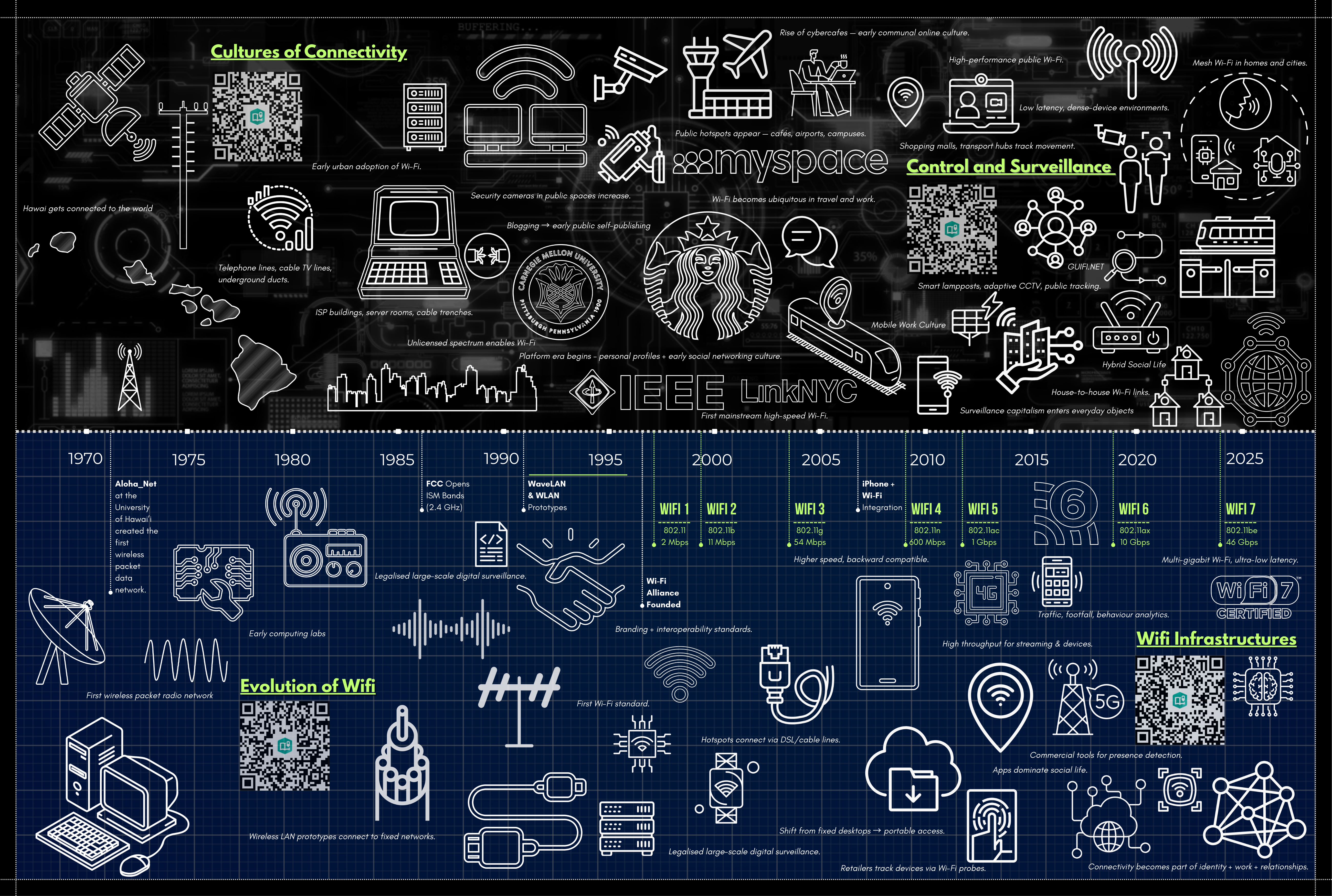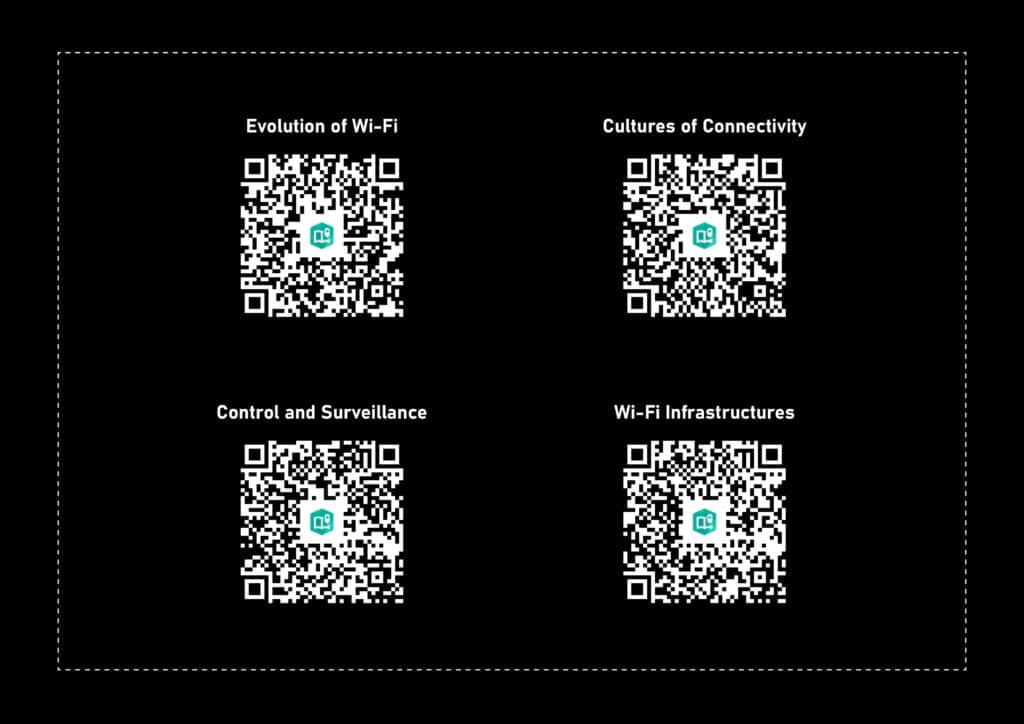A genealogy and spatial analysis of Wi-Fi technologies since 1970
Many digital technologies do not only float in a “cloud.” People may use and not see these systems during their day-to-day life, but we learned in our digital cultures course that these technologies are grounded in material systems with real environmental footprints and nuanced social impacts.

Our research initially explored digital cities based on “The Atlas of Digital Architecture” and tried to visualize the histories and connections of digital cities. We narrowed our focus to Wi-Fi, analyzing how it both impacts and is impacted by the built environment. Our visualization approach was inspired by Kate Crawford’s “Building Empires First,” picking apart Wi-Fi and mapping out its layered history.
Wi-Fi traces back to geographic necessity and innovation. In the early 1970s, researchers at the University of Hawai built AlohaNet, the first wireless packet data network. Wi-Fi being borne out of an island is noteworthy: connecting islands without running cables across the ocean required a different solution. While the earliest bits of Wi-Fi were introduced a little over five decades ago, the speed range, and capacity mostly emerged over the last 20 years.
Today, there are two main systems that we know as Wi-Fi. First, fixed wireless, which beams internet from ground-based towers to antennas on buildings. Second, satellite Wi-Fi, which serves more rural areas where towers cannot reach. Wi-Fi meditates and is being mediated by rural and urban connectivity’s. Most people do not see the actual infrastructure of Wi-Fi (the towers, the antennas, the satellites), but almost everyone who uses Wi-Fi notices when a connection drops from “strong” to “weak.” Wi-Fi reflects an intrinsic relationship with geography, as it remains entangled with the spatial realities of the built and natural environments.
In addition, routers log activities of users through IP addresses, inspiring the title “Wi-Fi’s Watching.” You can check out our GIS StoryMaps with the QR codes below that delve into a brief history of Wi-Fi, examples of how infrastructure has tried to maintain access, etc. We intentionally built a StoryMap for the project, to highlight how in order to access the project itself, one needs internet or connection.

Tool Essay: SpectraLink
For the speculative component of the project, the question became: what if Wi-Fi connectivity and coverage could actually be seen in real time? How would it impact how people move through the built environment to secure the strongest, most secure connection?
We conceptualized glasses called SpectraLink that visualize signal strength and privacy levels in real time as someone moves through physical space. Where is the best spot to sit for the strongest connection in the cafe? With SpectraLink, a user can now know without needing to sit in different places and see it impact their connection and wireless speed.
But there’s a catch. SpectraLink glasses are not just a product purchased once. The real cost is not the hardware itself; it is the ongoing agreement that locks in users, paying month after month for a service that enables the Wi-Fi connectivity vision and constantly tracks location and activity. Different subscription tiers unlock features, creating a hierarchy of access that mirrors the inequalities already existent in many present-day digital and material infrastructures. The video advertisement plays into this satire, such as the disclaimer at the end that quickly discloses the risks of using the technology.
The digital cultures class encouraged us to think critically about technology developments of the past, learn about their impacts on the present, and speculate on possibilities for the future. Wi-Fi is a technology that has rapidly developed and been deployed over the past five decades. We will see if technologies like SpectraLink begin to develop in the future.

